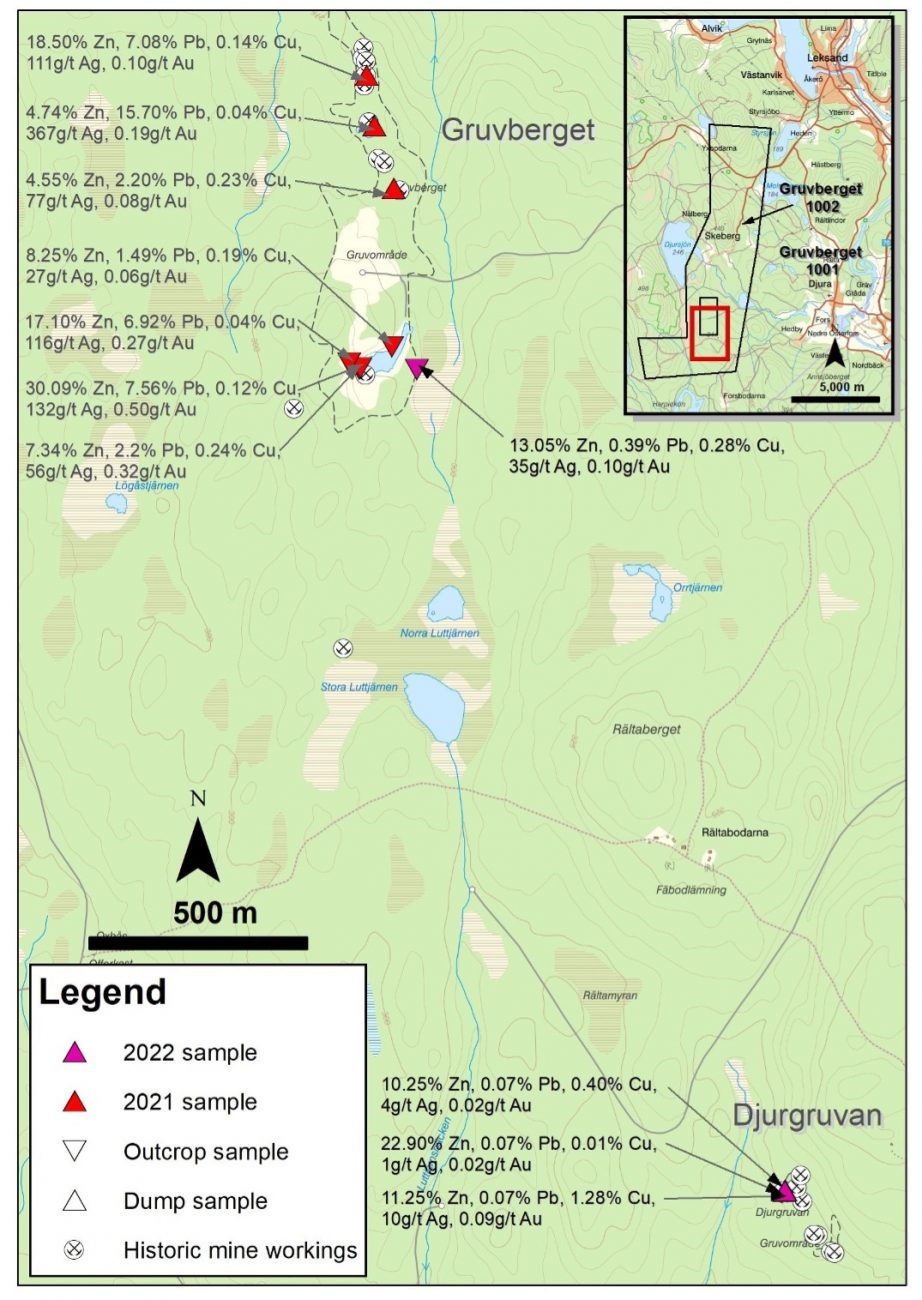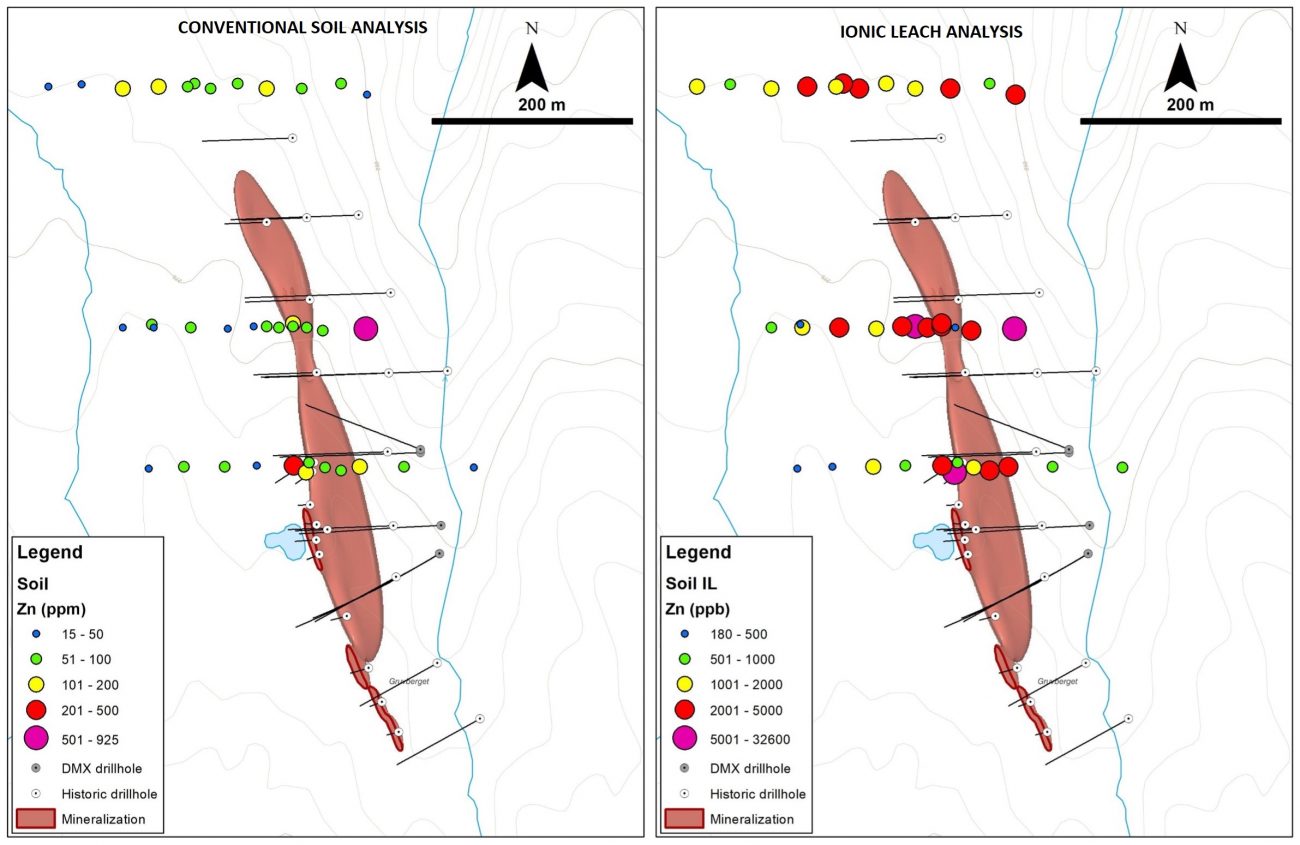
District Metals (DMX.V) has released the results from the soil sampling and rock grab sampling survey on the polymetallic Gruvberget property in Sweden. The samples were analyzed using conventional and ionic leach methods and according to the company the ionic leach analysis was more effective in identifying polymetallic mineralization at depth in the bedrock as the Gruvberget property is covered by a glacial till. This revelation has allowed District to kick off a widespread soil sampling program using ionic leach analysis over four target zones at Gruvberget and the results of this program should be released before the end of this year.
Ionic leaching has several advantages as there’s no need to dry and sieve the assays and the processing time at the lab is much shorter compared to the traditional assay analysis. The leach process basically liberates the ionic elements and this improves the odds of finding potential blind mineralization in the bedrock.

District Metals also reported on three rock grab samples collected at the Djurgruvan prospect which is approximately two kilometers south of the main Gruvberget zone. All three samples returned high grade to very high grade zinc values up to almost 23% zinc. A fourth grab sample was collected from the southern zone of the Gruvberget main zone and returned in excess of 13% zinc as well, so it’s fair to say the (small) rock sampling program was effective as it established Djurgruvan as a credible target while it expanded the footprint of the Gruvberget South Zone.
Disclosure: The author has a long position in District Metals. District is a sponsor of the website. Please read our disclaimer.
